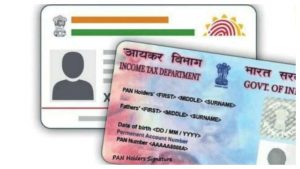JANUARY 30, 2022

A new model of “Federated Digital Identities” has been proposed by the Ministry of Electronics and Information Technology. With this model citizens can interlink, store and access multiple digital IDs via one unique ID. From PAN card to driving license, every important document can be kept under the unique ID.
This umbrella digital identity will “empower” citizens by “putting her in control of these identities and providing her the option of choosing which one to use for what purpose”. This proposal is expected to be released soon. The Ministry will seek comments by February 27.
This “federated digital identity” will work as a key to a registry where all state and Central identities will remain stored. Citizens will then be able to use this digital ID for availing third-party services via authentication and consented eKYC.
As all digital identities can be interlinked, citizens will not have to undergo repeat verification process. The proposal to introduce unique IDs was introduced by the ministry under the India Enterprise Architecture (IndEA) 2.0.
First introduced in 2017, the now updated 2.0 version of InDEA provides a framework to help public and private sector firms in building and designing IT architecture which can deliver “holistic and integrated services to the customers”.
This unique ID, which eliminates the need for repeated verification, is part of an updated framework of the India Enterprise Architecture. With this framework, states and Centre, public and private entities can go beyond their “boundaries”.
Three major architectural patterns for different government agencies
The new framework proposes three major architectural patterns for different government agencies.
- Domain architecture pattern – This pattern would be best for Central ministries or by ministries which deal with concurrent or state subjects, or have substantial funding and involvement of the Central government.
- State architecture pattern – This pattern would be best adopted by the state governments.
- InDEA Lite architecture pattern – This pattern would be best adopted by smaller departments of the Central and state governments.
As per the draft framework, the information technology projects that are a part of the new architecture must be created in a way that they can be interlinked and interoperable.
Further, the framework proposes these projects to follow the government’s open application programming interface policy. This way, the source code of the project will be available for everyone to tweak and improve upon.
As part of the draft report, only the main building blocks are proposed to be designed, developed, and managed centrally by the central or state governments. It further states, “From a governance perspective, the government plays an enabling role in respect of the remaining building blocks”.
Courtesy/Source: DNA







































































































